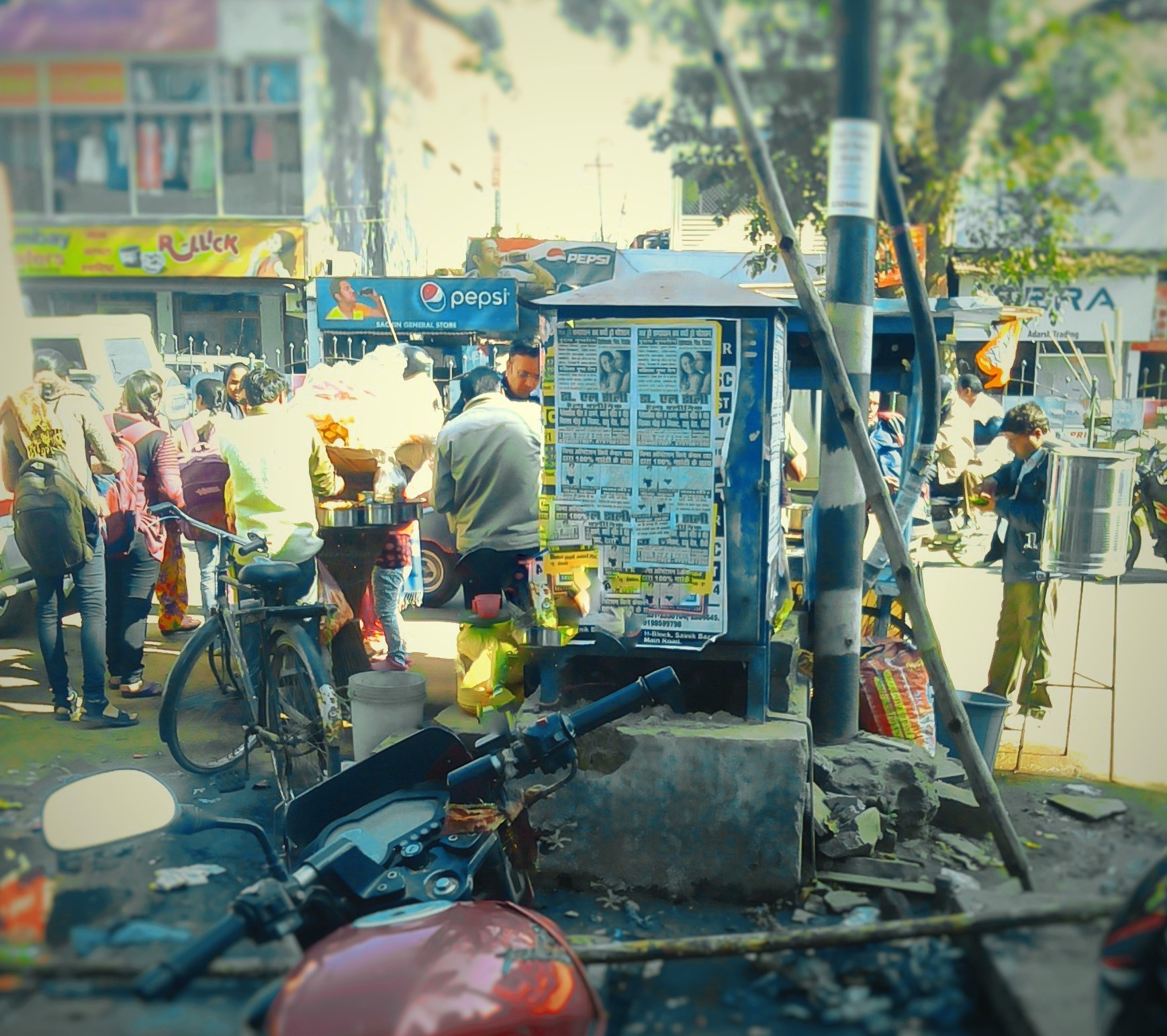India at Risk: Unhygienic Food Standards in The Country

Living in India has its own charm. Apart from other advantages, one very amusing plus-point is that your immune system will become very good. Living in India, and devouring all the street side ‘chaats’, ‘gol-gappas’, ‘chole-bhature’ or ‘vada pavs,’ one really does get to overcome the ‘NRI-delicate-tummy’ syndrome. Be it an office break or the ‘adda-point’ after college, we all have our fixed joints; which more than often comprises the likes of a tea stall, a dhaba or a make-shift ‘thela’. The busy drones that we are, we mostly overlook the hygiene or the food-standards of the place. Also, you get the ‘what-a -clean-freak’ glare from your friends if you turn down food that has mysterious origins. It is undoubtedly deemed very cool and sometimes a spirit of patriotism may also be associated with it, if you can gobble down the desi-food at the meagre most of food-joints. Our Bollywood movies definitely do make drinking the coloured ‘chuskis’ or mouthing road-side gol-gappas without questioning their hygiene, look very cool. I admit, I myself have given the ‘what-a-clean-freak’ look to few of my friends whilst eating gol-gappas next to a gutter.
However, on contemplation, I realized that, it (unhygienic food standards in the country) is indeed one of the most underrated problems that we Indians do not want to change. This may be due to many factors ranging from looking ‘cool’ to obtaining food at the cheapest of rates. Most of these joints have no food regulations at all. The joints are setup in cramped places, and hence mostly find refuge near the uncovered drains or where the food is exposed at all times to car exhaust. The dishes that the food is served on are washed by fully dipping it in the same bucket where the soap, the food residue and the already un-purified water ferment all day long. The preparations themselves are made from food that has been left over for a long time and adulterated by food colorants or such. And when the rains hit, it’s double the risk. People run under sheds and reach out for a steaming cup of tea/coffee and ‘pakodis’ from the same stalls with more frequency and with flies buzzing all around. Then one case of disease is found, and soon enough it becomes an epidemic.
The Trend
A huge contributing factor to people going to these joints is that the food is available at unbelievably cheap rates. The common man, reared with the ‘saving mentality’, puts saving bucks before health. The same mentality goes for the shopkeeper/vendor, and he saves by using low-quality products to manufacture his eatables. The ‘kuch-nahi-hota’ (nothing-happens), the ‘dekha-jayega’ (whatever-happens-will-happen) mentality, and the resistance that after a few bouts of vomiting, our stomach develops over time, contributes largely to the roots of this problem that is not accepted as a problem by millions of Indians. However, this mentality needs to change. In saving the bucks, we compromise with the quality of things. I agree this is not the case with every food stall, but this is, sadly, the case in most. The living standard for people in general is very low. The rich stink of wealth and the poor continue to compromise with health and standards to survive. Then, when an epidemic strikes or the weather unleashes its fury like it is doing right now; people die. Something needs to be done to improve the food standards in this country.
Cases and Risk
There is the 2013 Bihar food poisoning case, the 1998 case of adulteration of edible mustard oil in New Delhi which caused epidemic dropsy killing 60 people; resurfacing again in Gwalior (2000), Kannauj(2002), Lucknow(2005); all stark examples of how easily a disease can spread by unhygienic conditions. The 2009 flu pandemic in India was definitely one of the worst experiences for the country. The H1N1 virus spread rapidly across the country owing largely to these unchecked eating habits, which most people in India accept. Reporting 149 deaths in the city (New Delhi) where the headquarters of the Food Safety and Standards Authority of India is situated, it could be noted that the metropolitan cities or the well-developed cities were the ones reporting higher number of deaths (Pune reporting 144 deaths, Bengaluru reporting 74 and Maharashtra becoming the state to report the highest number of deaths). These statistics clearly support that the cities where there is a trend of having street food or food from outside the home are at a higher risk of getting infected by communicable diseases.
What can be done?
Walking just half a kilometre from my college in Delhi, I encounter at least 25 such food joints, all doing great business. Now, if we at once disrupt the chain of street food, it would be really unfair to the owners of these stalls, who themselves are trying to make ends meet. What can be done is set standard regulations of food quality and also have these stalls reviewed or checked by a formal food inspector. The joints could be given a rating based on set standards of quality, cleanliness, proper disposal facilities, purity of products used, etcetera. Then only, can the foods from properly rated stalls can be consumed safely by people. The food might hardly cost a little more, but that increase in price will definitely compensate for the hospital bills and the daily pills one would have to take otherwise. The proper regulation of food industry at basic levels will definitely go a long way in elevating the eating and consequently the living standards of people. Wouldn’t it be nice to stand in a clean area, have the same tasty food, and not be worried about getting diarrhoea?
Now, the more surprising news is that there is already a provision of such rules as per the Food Safety and Standards Act(2006). All food stall owners are also supposed to be inspected and regulated by a Designated Officer as per the Food Safety and Standards Authority of India Regulations.
The Breaches in the Present Scenario
The massive plethora of food stalls are hardly ever inspected and almost never follow the sanitary and hygiene regulations which include regulation of location, surroundings, maintenance, drainage and proper disposal system as mentioned in the “Sanitary and Hygienic requirements for food manufacturer/processor or handler. They also need to be registered and given a proper license. The food hawkers or street food stalls or their likes have been regarded as “Petty Food Business” in the Food Safety and Standards Act (2006) and be it for a publicized restaurant or a temporary stall owner, there is a necessity to display the registration certificate and a photo identity card at a prominent place at all times within the food joint (Registration and Licensing of Food Business Regulations). How many of the street stalls you’ve been to prominently showcased their registration license for all to see?
And now again, cases of swine flu are being reported and apart from just a notice, no physical change can be seen in the state of food regulations as such. In a country as highly populated as India, citizens are always at risk of getting infected. If these conditions aren’t changed and the already available rules not strictly enforced, India will continue to report deaths and we will be gravely sorry rather than safe.




